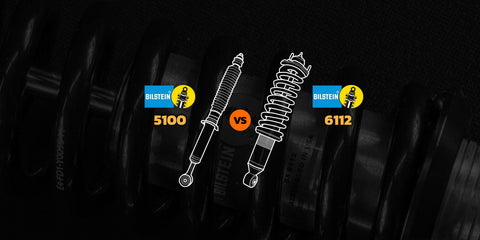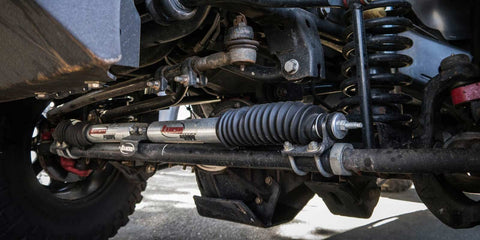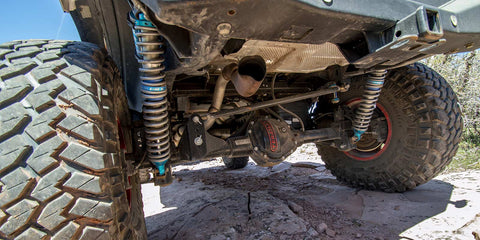What is the difference between 2WD and 4WD shock absorbers?
Posted by Brandon Sevestre on
There are the application specific differences though, such as between a 2WD Ram 2500 and a 4WD Ram 2500. The front shocks will be of different lengths, and possibly different mounts. More space is required in the front for not only the CV axles, but also for increased travel for 4WD situations. The Gross Vehicle Weight between these two vehicles of the same year will not vary enough to warrant different shock valving.
- Shock lengths usually differ between 2WD and 4WD on the same MAKE / MODEL platform
- Shock length differences are usually seen in the front, rear lengths are much more similar between drive-types
- Shock mounts usually differ between 2WD and 4WD on the same MAKE / MODEL
Most aftermarket shock manufacturers have valving classes in which vehicles fall into. For instance, every 2003-2013 Dodge Ram 2500 and 3500 vehicle will be in a single class of shock valving, which may also be shared with every 2005+ Ford Super Duty. There are some manufacturers that valve the entire line of shocks the same, regardless of application.
The point being here is that you should not shop and purchase 2WD shocks for your 4WD vehicle because they’re cheaper, or “its basically the same vehicle.” Yes, we get countless returns due to this issue alone, dont be that person!
Both of these Bilstein 4600 parts are for a 2012 Dodge Ram 1500, but for separate drive types. The 4WD uses a strut, while the 2WD uses a normal shock, mounting is also vastly different.


The below examples are for the front of a 2000 Toyota Tacoma, different drive types:








